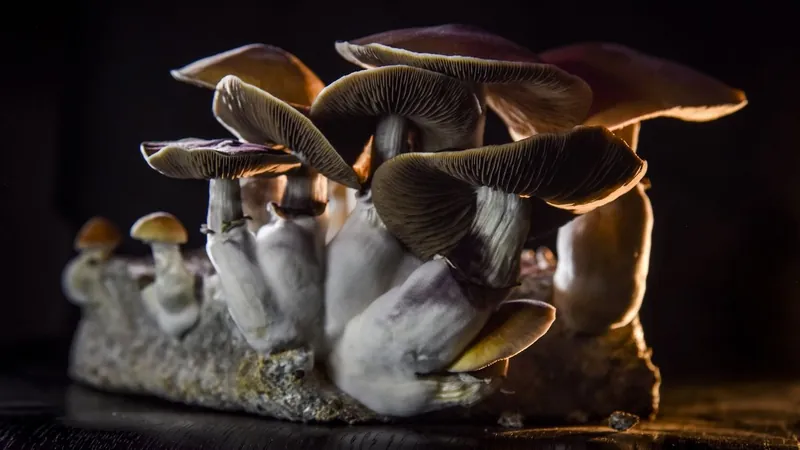
From High Hopes to Hospital Horror: The Terrifying Tale of One Man's 'Magic Mushroom' Experiment
2024-11-20
Author: Lok
The Incident
Initially seeking an alternative remedy for his bipolar disorder and opioid dependence, the man decided to brew 'magic mushrooms' into a tea. However, in a perilous twist, he filtered the concoction through cotton and ultimately injected the liquid directly into his bloodstream, a method rarely, if ever, documented in safe practices.
The Symptoms
Following this risky procedure, the patient's condition began to deteriorate alarmingly fast. He developed jaundice, feeling lethargic, nauseous, and soon succumbed to severe gastrointestinal distress characterized by diarrhea and vomiting blood. These alarming symptoms prompted immediate transport to the hospital.
Diagnosis
Upon arrival, doctors conducted a series of tests that revealed the devastating extent of his situation: multiple organs were failing, and his blood was found to be contaminated with Psilocybe cubensis, the very fungi he had tried to use for self-medication. This unusual route of administration not only introduced the fungus into his bloodstream but also led to dangerous infections—both fungal and bacterial—compelling the medical team to act swiftly.
The Fallout
The patient faced multisystem organ failure and developed acute respiratory syndrome, where fluids infiltrate the lungs' air sacs, endangering his capacity to breathe. He was aggressively treated with a cocktail of antibiotics and antifungal medications, and his condition required the use of a ventilator.
Aftermath
Fortunately, after a difficult hospital stay, he was discharged but remained on antibiotics and antifungal treatments as part of a long-term recovery plan. His experience serves as a serious warning about the risks associated with injecting psychedelic substances, a practice that diverges drastically from traditional uses, where magic mushrooms are either consumed directly or brewed in tea.
A Cautionary Note
This case stands out not merely for its bizarre circumstances but for the stark reminder it offers. While medical research into psilocybin as a treatment for mental health issues is progressing, the purification and medical administration of psilocybin are tightly controlled and devoid of any fungal matter. The man’s grim experience is a stark illustration of the potential dangers when substances are used outside of prescribed methods.
Conclusion
As the scientific community explores the therapeutic potentials of psychedelics, it is crucial for the public to remain informed about the risks and adhere to guidance provided by healthcare professionals. Misadventures like this underscore the necessity of caution when delving into unregulated and unproven treatment approaches.




 Brasil (PT)
Brasil (PT)
 Canada (EN)
Canada (EN)
 Chile (ES)
Chile (ES)
 España (ES)
España (ES)
 France (FR)
France (FR)
 Hong Kong (EN)
Hong Kong (EN)
 Italia (IT)
Italia (IT)
 日本 (JA)
日本 (JA)
 Magyarország (HU)
Magyarország (HU)
 Norge (NO)
Norge (NO)
 Polska (PL)
Polska (PL)
 Schweiz (DE)
Schweiz (DE)
 Singapore (EN)
Singapore (EN)
 Sverige (SV)
Sverige (SV)
 Suomi (FI)
Suomi (FI)
 Türkiye (TR)
Türkiye (TR)